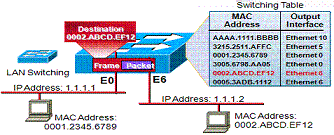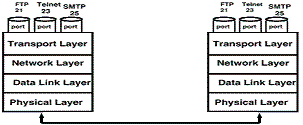Recently, the industry has been bombarded with terminology such as Layer 3 switching, Layer 4 switching, multilayer switching, routing switches, switching routers, and gigabit routers. This “techno-jargon” can be confusing to customers and resellers alike.
For purposes of this discussion, all these terms essentially represent the same function, and, as such, the term Layer 3 switching is used to represent them all. While the performance aspect of Layer 3 switching makes most of the headlines, higher performance in switching packets does not, by itself, promise that all problems are solved in a network. There must be a recognition that application design, mix of network protocols, placement of servers, placement of networking devices, management, as well as the implementation of end-to-end intelligent network services are at least as important—maybe more so—than simply adding more bandwidth and switching capability to the network.
Why Do We Need Layer 3 Switching?
So, why do we need Layer 3 switching? Enterprise networks face unprecedented challenges today. Desktop computing power has tripled in the past two years and shows no sign of leveling off. The proliferation of network-dependent intranet and multimedia applications has increased traffic volumes in many campus networks by an order of magnitude over the past several years. Network managers have responded to this need to move data at greater speeds by moving more desktops to switched 10/100 Mbps and deploying LAN switching at unprecedented levels, both in the data center and in the wiring closets to scale their end-to-end bandwidth. To effectively utilize the increased capacity, they must scale their Layer 3 performance to handle changing traffic patterns. Conventional wisdom that 80 percent of the traffic stays local to the subnet and 20 percent or less traverses across subnets no longer holds. More than half of the traffic volume travels across subnet boundaries. Two factors contribute to these changing traffic patterns.
With Web-based computing, a PC can be both a subscriber and a publisher of information. As a result, information can now come from anywhere in the network, creating massive amounts of traffic that must travel across subnet boundaries. Users hop transparently between servers across the entire enterprise by using hyperlinks, without the need to know where the data is located.
The second factor leading to the loss of locality is the move toward server consolidation. Enterprises are deploying centralized server farms because of the reduced cost of ownership and ease of management. All traffic from the client subnets to these servers must travel across the campus backbone, exacerbating performance problems.
Because of the rising levels of anywhere-to-everywhere communication, Layer 3 switching that can scale with increasing link speeds has become an imperative. Layer 3 switching is required to meet the demands of both client/server and peer-to-peer traffic on the intranet.
What Is Layer 2 Switching?

What is the difference between a Layer 2 switch, a Layer 3 switch, and a router?
A Layer 2 switch is essentially a multiport bridge. Switching and filtering are based on the Layer 2 MAC addresses, and, as such, a Layer 2 switch is completely transparent to network protocols and users’ applications.
Layer 2 switching is the number one choice for providing plug-and-play performance.
What Is Routing?
In contrast to Layer 3 switches, routers make Layer 3 routing decisions by implementing complex routing algorithms and data structures in software. Keep in mind this has little to do with the forwarding aspects of routing.
Routing has two basic functions, path determination, using a variety of metrics, and forwarding packets from one network to another.
The path determination function enables a router to evaluate the available paths to a destination and to establish the preferred handling of a packet.
Data can take different paths to get from a source to a destination. At Layer 3, routers really help determine which path. The network administrator configures the router enabling it to make an intelligent decision as to where the router should send information through the cloud.
The network layer sends packets from source network to destination network.
After the router determines which path to use, it can proceed with switching the packet: taking the packet it accepted on one interface and forwarding it to another interface or port that reflects the best path to the packet’s destination.

